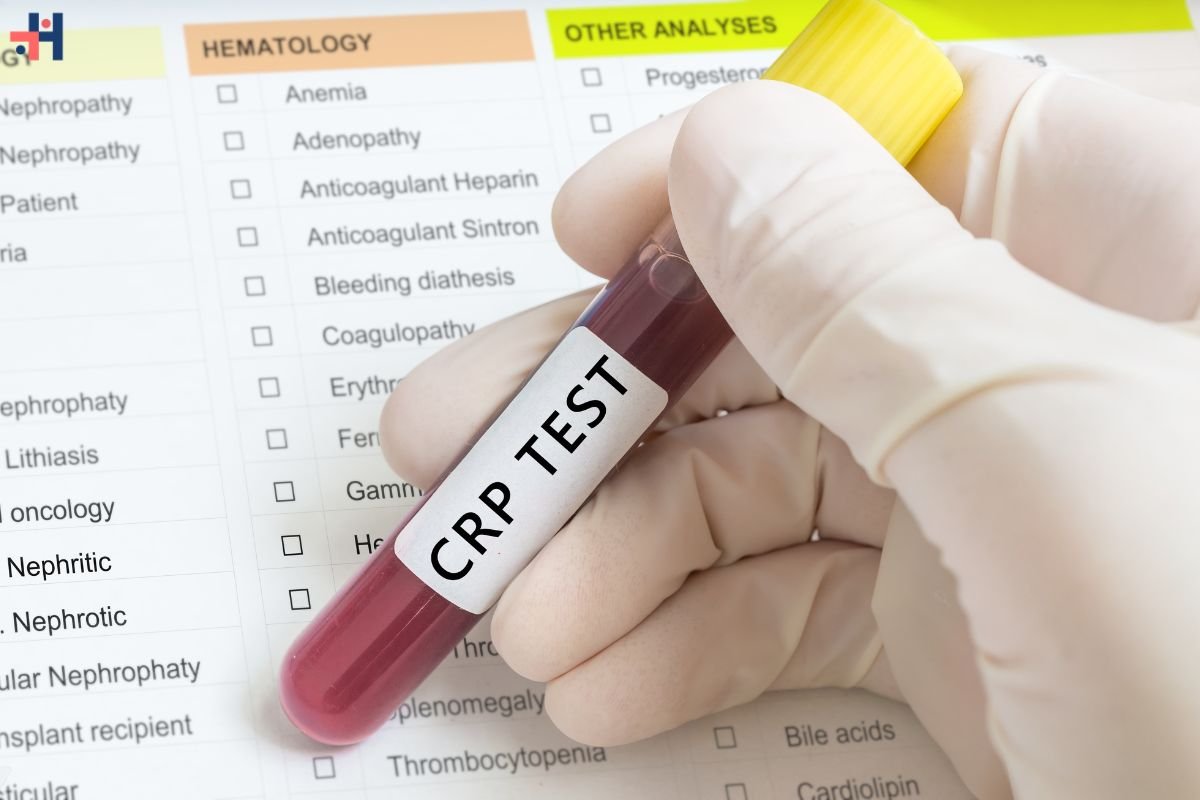[Source – Medical News Today]
C-reactive protein (CRP) serves as a significant marker for inflammation within the body. Its presence can indicate a range of health conditions, from acute infections to chronic diseases like cardiovascular ailments and arthritis. Delving into the intricacies of CRP levels in blood is essential for gauging overall health and identifying potential health risks. In this expansive guide, we’ll explore the fundamentals of CRP, its measurement, interpretation, factors affecting its levels, management strategies, and its significance in health monitoring.
What is CRP?
C-reactive protein is an acute-phase protein produced by the liver in response to inflammation. When the body encounters inflammatory stimuli, such as infection, injury, or tissue damage, CRP levels rise as part of the immune response. By monitoring CRP levels, healthcare providers can assess the severity of inflammation and track the body’s response to treatment.
Measurement of CRP Levels in Blood:
CRP levels are typically measured through a blood test known as a CRP test. The results are reported in milligrams per deciliter (mg/dL) of blood. The test is simple, quick, and widely available. Normal CRP levels in healthy individuals typically fall below 10 mg/dL. However, interpretation may vary based on factors like age, sex, and underlying health conditions.
Interpreting CRP Levels in Blood:
Understanding the significance of CRP levels is essential for accurate health assessment:

- Low CRP Levels: Levels below 1 mg/dL are generally considered low and may indicate minimal inflammation or infection.
- Moderate CRP Levels: Levels between 1 and 3 mg/dL suggest a mild degree of inflammation, often associated with factors like stress or minor infections.
- High CRP Levels: Levels exceeding 3 mg/dL indicate a significant inflammatory response, possibly due to conditions such as bacterial infections, autoimmune diseases, or chronic inflammatory disorders.
- Very High CRP Levels: Levels exceeding 10 mg/dL are indicative of severe inflammation, commonly seen in acute conditions like sepsis, myocardial infarction, or severe infections.
Factors Affecting CRP Levels in Blood:
Several factors can influence CRP levels in blood:
- Infections: Both bacterial and viral infections can trigger a robust inflammatory response, leading to elevated CRP levels.
- Chronic Diseases: Conditions such as rheumatoid arthritis, lupus, inflammatory bowel disease, and diabetes are associated with persistently high CRP levels.
- Obesity: Excess adipose tissue, particularly around the abdomen, is linked to higher levels of inflammation and CRP.
- Smoking: Smoking is a significant risk factor for increased inflammation and elevated CRP levels.
- Diet: Consuming a diet high in processed foods, refined sugars, and unhealthy fats can promote inflammation and raise CRP levels.
- Stress: Chronic stress can trigger inflammatory pathways, leading to elevated CRP levels over time.

Managing CRP Levels in Blood:
Taking proactive steps to manage and reduce CRP levels can promote better health outcomes:
- Adopt a Healthy Diet: Emphasize whole, nutrient-rich foods such as fruits, vegetables, lean proteins, and omega-3 fatty acids, while minimizing processed foods and sugary beverages.
- Maintain a Healthy Weight: Aim for a body mass index (BMI) within the healthy range to reduce inflammation associated with obesity.
- Regular Exercise: Engage in regular physical activity, including both aerobic exercise and strength training, to lower CRP levels and improve overall health.
- Stress Management: Practice stress-reducing techniques such as meditation, deep breathing exercises, or yoga to mitigate the inflammatory response.
- Smoking Cessation: If you smoke, seek support and resources to quit smoking and reduce inflammation in the body.
- Monitor Health Conditions: Stay vigilant about managing underlying health conditions that contribute to elevated CRP levels, such as diabetes, cardiovascular disease, or autoimmune disorders.
- Medication: In some cases, medications such as statins or anti-inflammatory drugs may be prescribed to help lower CRP levels and manage inflammation.

Significance of CRP Monitoring:
Regular monitoring of CRP levels in blood can provide valuable insights into overall health status and disease progression. It can aid in the early detection of inflammatory conditions, guide treatment decisions, and assess the effectiveness of interventions. By tracking changes in CRP levels over time, healthcare providers can tailor treatment plans to individual needs and optimize health outcomes.
Conclusion:
CRP levels in blood serves as a vital indicator of inflammation in the body, with implications for overall health and disease risk. By understanding CRP levels and their interpretation, individuals can take proactive steps to manage inflammation and reduce the risk of chronic diseases. Through lifestyle modifications, stress management, and regular monitoring, it’s possible to optimize CRP levels in blood and promote long-term health and well-being. Remember to consult with healthcare professionals for personalized guidance and recommendations tailored to your individual needs and health goals.









